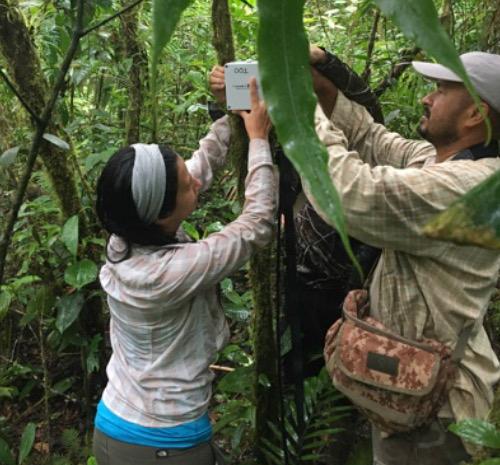
Natalie Sánchez Ulate and parataxonomist Calixto Moraga set up ARU in Sector Pitilla.
In February of this year, the GDFCF/ACG BioAve team broadened the scope of our BioAve bird research project. Spearheaded by project leader Natalie Sánchez Ulate, we deployed four bioacoustic, or autonomous recording, units (ARUs) at three different biological stations on the rain forest side of Área de Conservación Guanacaste. ARUs record bird songs, allowing researchers to collect data on the location and distribution of certain birds – Wood Thrush, in our case - without having to be there. We set up ARUs near the biological stations Pitilla, Llanura and Quica. The parataxonomists at Estación Pitilla have been trained in the deployment and use of the ARUs and will weekly gather the data from each of the stations, while also moving them to alternate locations, as needed. These data will complement the other research we are conducting as part of an overall effort to better understand the dietary and habitat needs of Wood Thrush, which is considered Near Threatened, during its non-breeding season. Funded by the U.S. Fish and Wildlife Service’s Migratory Bird Conservation Act (NMBCA) and several individual donors, we are collecting fecal samples from Wood Thrush and other migrants while they are in ACG. These samples are then DNA barcoding to learn, in as much detail as possible, what migratory birds are eating. In its third year, the project also involves banding birds, as well as collecting data on all birds – migrants and residents - collected during our mist-netting field sessions. And… more exciting bird news! We will be adding at least one, and possibly two, MOTUS stations to ACG – one in Sector Pitilla and one in Sector Orosí. MOTUS wildlife tracking systems are part of an international collaborative research network that use radio telemetry to track the migratory and other patterns of tagged birds. Collectively, these data will enable us better understand migration patterns and habitat usage of ACG birds, helping inform conservation management actions in the protected area.